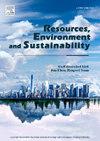Peatlands-based demonstration of bioeconomy innovations at scale to help achieve many of the United Nation’s Sustainable Development Goals
IF 12.4
Q1 ENVIRONMENTAL SCIENCES
引用次数: 0
Abstract
Development of wet peatland innovation (Paludiculture) offers significant potential for the alternative and sustainable use of land for addressing new viable commercial green opportunities. However, the lack of appropriate demonstration facilities has limited the development of Paludiculture. There is a substantial knowledge gap surrounding the design, tangible use and scaling of novel bioeconomy demonstration sites to meet emerging paludiculture innovation and for tailoring strategic policies to unlock regulatory shortcomings. This review addresses the important development of a novel integrated multitrophic aquaculture (IMTA) site for demonstrating paludiculture innovation at scale in rewetted peatlands. It addresses novel enablers, drivers and shortcomings for advancing emerging bioeconomy needs using a Penta-helix multiactor framework that meets effective resource management, biomass recycling, pollution control, sustainable production, risk management and predictability. Findings revealed that duckweed growth from this IMTA site (ca. area of 12,800 m2) can remediate 0.78 T yr −1 of total nitrogen and 0.38 T yr −1 of total phosphorous from fish waste stream yielding ca. 500 T per yr −1 duckweed biomass of high protein content (21.84 ± 2.45%). Next generation sequencing and bioinformatic analysis of Illumina and MinION data from the channels revealed a total of 982 species from 341 genera across nine phyla of microalgae that offer future potential to be biorefined on site for new high value products. Additionally, identification of specific microalgae and/or bacterial species can be used as early warning bioindicators of unwanted flux in the defined IMTA ecosystem, such as the impact of extreme weather events on aquaculture. Implications of findings support a strong alignment with zero-waste and zero-pollution principles and will contribute to achieving many of the United Nation’s Sustainable Development Goals. This integrated approach provides a novel IMTA blueprint for replicating paludiculture innovation in other demonstration locations globally that will be informed by future tailored life cycle assessment along with end-user evaluation and monitoring needs that addresses circularity, environmental and social impacts.
以泥炭地为基础的大规模生物经济创新示范,以帮助实现许多联合国可持续发展目标
湿泥炭地创新(Paludiculture)的发展为土地的替代和可持续利用提供了巨大的潜力,以解决新的可行的商业绿色机会。然而,缺乏适当的示范设施,限制了古乐文化的发展。围绕新型生物经济示范点的设计、实际使用和规模,以满足新兴的生物农业创新,以及定制战略政策以解决监管缺陷,存在着巨大的知识缺口。本文综述了一种新型综合多营养水产养殖场(IMTA)的重要发展,以展示复湿泥炭地大规模的养殖创新。它利用五螺旋多因素框架,解决了推动新兴生物经济需求的新促成因素、驱动因素和缺点,满足了有效的资源管理、生物质回收、污染控制、可持续生产、风险管理和可预测性。结果表明,在该IMTA场地(面积为12,800 m2)生长的浮萍可修复鱼类废物流中0.78 T yr−1的总氮和0.38 T yr−1的总磷,产生约500 T / yr−1的高蛋白含量浮萍生物量(21.84±2.45%)。下一代测序和Illumina和MinION通道数据的生物信息学分析显示,来自9门341属的微藻共982种,为未来的高价值产品提供了生物精炼的潜力。此外,鉴定特定的微藻和/或细菌种类可作为确定的海洋生态系统中有害通量的早期预警生物指标,例如极端天气事件对水产养殖的影响。调查结果的含义支持与零废物和零污染原则的紧密一致,并将有助于实现联合国的许多可持续发展目标。这种综合方法为在全球其他示范点复制农业创新提供了新的IMTA蓝图,未来将根据量身定制的生命周期评估以及解决循环、环境和社会影响的最终用户评估和监测需求提供信息。
本文章由计算机程序翻译,如有差异,请以英文原文为准。
求助全文
约1分钟内获得全文
求助全文
来源期刊

Resources Environment and Sustainability
Environmental Science-Environmental Science (miscellaneous)
CiteScore
15.10
自引率
0.00%
发文量
41
审稿时长
33 days
 求助内容:
求助内容: 应助结果提醒方式:
应助结果提醒方式:


